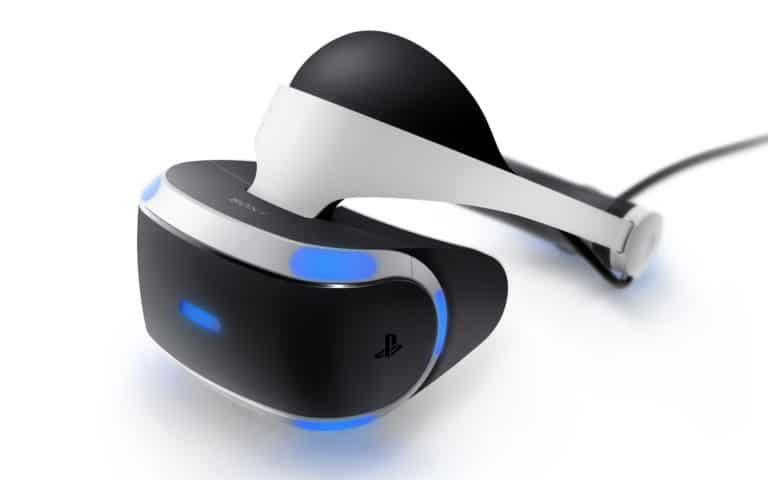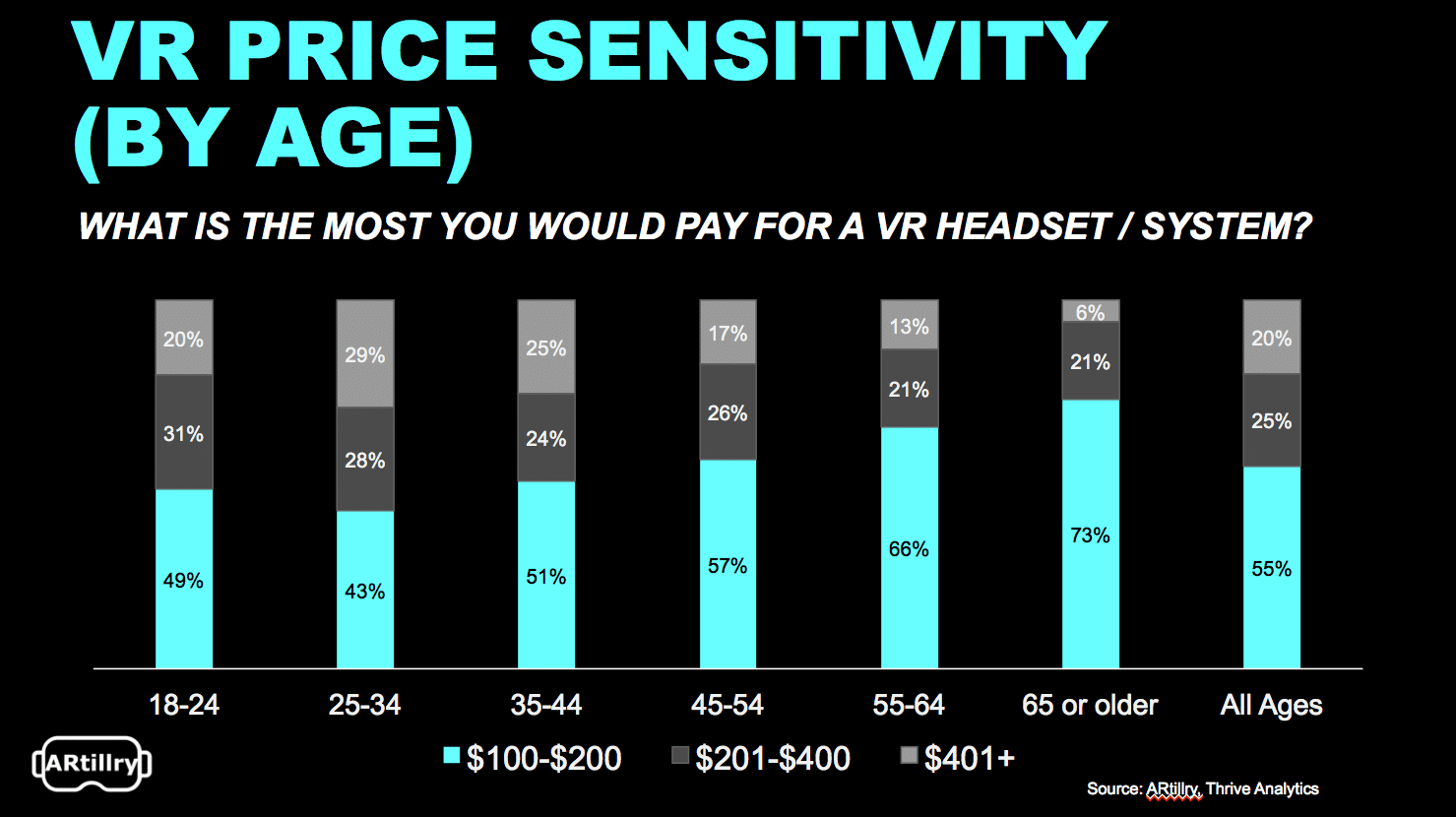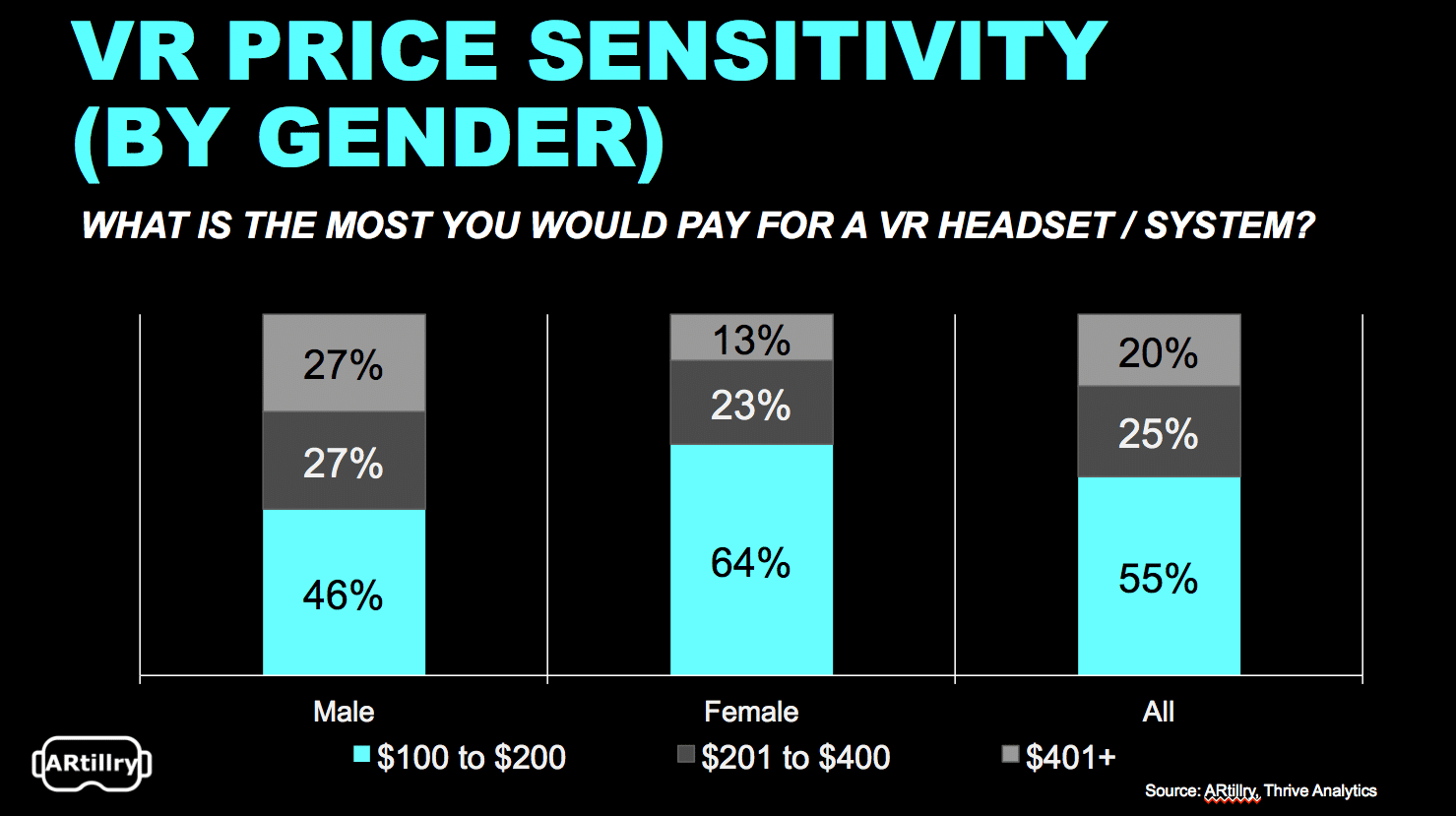
Among all of the VR adoption drivers we’ve examined such as content, price is not surprisingly a big factor. This was one of several findings in the latest ARtillry Intelligence Briefing: VR Usage & Consumer Attitudes (excerpt below).
And the number below which adoption interest spikes is $400, and more so at $200. This aligns with marketplace activity lately, such as Oculus’ summer sale which put the rift squarely at… $400. And the Windows Mixed Reality headsets about to flood the market will be in that price range.
Of course, this just includes the headset. A high-end PC with enough graphical processing horsepower is still required. This can sometimes be partially justified by those who need a new PC anyway. Or in the case of PSVR, they might already own a PS4.
The “all-in” price is greater than $1000, which needs to come down if VR is to really scale. And by scale, we mean the 100-million magic number for unit sales that signifies ubiquity. Once that installed base is reached, it incentivizes content creators and the flywheel starts spinning.
Working closely with Thrive Analytics, ARtillry authored questions to be fielded through its established survey engine. This first wave of Virtual Reality Monitor™ (VRM) taps a sample of 2000 adults to reveal consumer behavior patterns that are examined throughout the report.
Part III. Price
As examined earlier, price is an important factor in VR adoption, just as it is with most products. But what are the specific ways that price is currently a barrier to VR adoption? And more importantly, what price points represent triggers for consumer interest – or disinterest – in VR ownership.
To begin, the greatest interest in VR not surprisingly exists at lower price points ($100 – $200). And the least interest lies with more expensive purchases (greater than $400). Given that tier-1 headsets primarily exist at those higher price points, they are most susceptible to price sensitivity.

Broken down further, there is a clear correlation between price sensitivity and age. Younger consumers are more willing to pay greater sums for VR headsets. This is likely due to the same reasons (digital savvy, interest) that make them more attracted to VR in general, as explored above.
There is one exception however: The 25-34 age group showed greater willingness to spend than its 18-24 counterpart. This is likely due to the age group’s spending power, given post-graduate and pre-parenthood life stages. It could therefore represent an important target demographic for VR.
 As for gender segmentation, male respondents (27 percent) outnumbered female respondents (13 percent) in willingness to spend $400 or more on a VR headset. This stands to reason, generally mapping to gender-specific affinities for video games, which are VR’s largest current use case.
As for gender segmentation, male respondents (27 percent) outnumbered female respondents (13 percent) in willingness to spend $400 or more on a VR headset. This stands to reason, generally mapping to gender-specific affinities for video games, which are VR’s largest current use case.
For a deeper dive on AR & VR insights, see ARtillry’s new intelligence subscription, and sign up for the free ARtillry Weekly newsletter.
Disclosure: ARtillry has no financial stake in the companies mentioned in this post, nor received payment for its production. Disclosure and ethics policy can be seen here.
